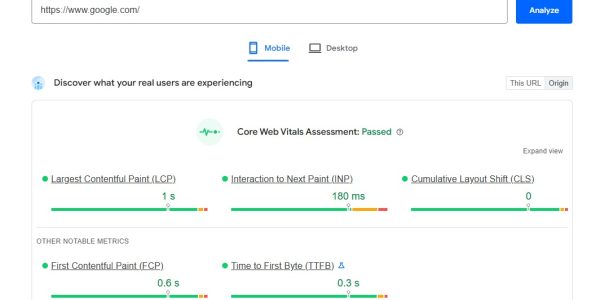Picture this: A potential customer lands on your website. They like your product, the design is clean, and the pricing seems fair. But they hesitate. A small voice in their head asks, “Can I really trust this company? Is this product as good as they claim?”
This moment of hesitation is where countless sales are lost. In a digital world saturated with options, trust is the ultimate currency. And what’s the most powerful way to build it? Social proof.
Seeing that other people—just like them—have used your product and had a great experience is often the final nudge they need to convert. This is where a well-implemented testimonial slider becomes one of the most persuasive tools in your WordPress arsenal. It’s a dynamic, space-saving, and visually engaging way to showcase your customers’ success stories right where they matter most.
But be warned: a poorly executed slider can do more harm than good. In this comprehensive guide, we’ll break down everything you need to know to create a high-converting testimonial slider that builds trust, delights users, and drives growth.

What is a Testimonial Slider and Why Does Your Site Need One?
A testimonial slider, also known as a customer review carousel, is a website component that displays multiple testimonials or reviews in a rotating, slideshow format. Instead of listing reviews vertically and taking up significant page space, a slider presents them one or a few at a time, often with navigation arrows or dots for users to browse through.
The benefits go far beyond just saving space:
- Builds Instant Credibility: According to a BrightLocal survey, 87% of consumers read online reviews for local businesses. Displaying positive feedback prominently shows new visitors that you have a track record of success.
- Boosts Conversion Rates: Testimonials serve as powerful endorsements. Placing a well-designed slider on key pages (like your homepage, product pages, or checkout) can directly address buyer hesitation and increase conversions.
- Communicates Key Benefits: Testimonials often highlight the specific problems your product or service solved. This allows potential customers to see the real-world value you offer through the authentic voice of a peer.
- Engages Visitors: The subtle motion and interactivity of a slider can draw a user’s eye and encourage them to engage with your content, keeping them on the page longer.
The Double-Edged Sword: When Testimonial Carousels Go Wrong
While the benefits are clear, it’s crucial to acknowledge the common pitfalls. The internet is littered with testimonial carousels that are clunky, slow, and ignored by users—a phenomenon often called “banner blindness.”
A poorly optimized testimonial slider can lead to:
- Slow Page Load Speed: Sliders loaded with heavy images and clunky JavaScript can severely impact your site’s performance, hurting both user experience and your SEO rankings.
- Poor Accessibility: Auto-playing sliders without pause controls can be frustrating for many users and inaccessible to those using screen readers.
- Hidden Information: If the most compelling review is on the third slide, many users might never see it. Important content shouldn’t be hidden in a carousel.
So, how do you reap the rewards without falling into these traps? By following proven best practices.
A Practical “Broken” Slider
This simulates common real-world slider failures.
- Endless loading spinner.
- Broken user avatar.
- Text overflows its container.
- Navigation buttons don’t work.
7 Best Practices for a High-Converting WordPress Testimonial Slider
Creating a slider that actually works is both an art and a science. Here are seven expert tips to ensure your customer testimonials get the attention they deserve.
1. Prioritize Absolute Authenticity
Today’s consumers can spot a fake review from a mile away. Vague, overly-glowing praise from “John D. from California” just doesn’t cut it anymore. To build real trust, your testimonials need to feel real.
- Use Full Names and Photos: Whenever possible, include a high-quality headshot and the full name of the customer. It puts a face to the name and makes the testimonial infinitely more credible.
- Add Company/Job Titles: For B2B businesses, including the person’s company and job title adds another layer of professional validation.
- Incorporate Video: A short video testimonial is the gold standard of social proof. It’s difficult to fake and powerfully conveys genuine emotion. Consider embedding video clips within your slider.
2. Keep It Visually Clean and On-Brand
Your testimonial slider shouldn’t look like a third-party element bolted onto your site. It needs to be a seamless, integrated part of your design.
- Simple is Better: Avoid flashy animations and distracting backgrounds. The focus should be on the customer’s photo and their words.
- Use Your Brand’s Typography and Colors: Ensure the fonts and colors match your website’s style guide for a cohesive look.
- Ample White Space: Don’t cram too much information into one slide. Use white space to make the text easy to read and the design feel uncluttered.
3. Highlight the “Golden Quote”
Most people scan websites; they don’t read every word. Your slider design should cater to this behavior. Don’t force visitors to read a 100-word paragraph to understand the value.
- Use a Large, Bold Excerpt: Pull out the single most powerful and benefit-driven sentence from the testimonial and display it as a headline or a larger pull quote.
- Keep the Full Text Accessible: You can include the full, longer testimonial in a smaller font size below the “golden quote” for those who want to read more.
4. Optimize for Mobile-First Performance
Over half of all web traffic comes from mobile devices. If your testimonial slider is clunky or difficult to use on a phone, you’re alienating a majority of your audience.
- Ensure It’s Swipe-Friendly: The slider must support touch gestures on mobile devices.
- Readable Font Sizes: Test the slider on various screen sizes to ensure the text is legible without pinching and zooming.
- Lazy Load Images: To protect mobile page speed, implement “lazy loading” so that images in the slider (like customer headshots) only load as they are about to be viewed.
Read our guide on optimizing WordPress for Core Web Vitals
5. Give Users Control
Auto-playing carousels are a usability nightmare. They take control away from the user and can cause frustration, especially if the text rotates away before they’ve finished reading.
- Avoid Autoplay: The best practice is to let the user navigate the testimonials at their own pace.
- Use Clear Navigation: Provide obvious “next” and “previous” arrows and/or dot navigation so users know there is more to see and can easily browse through the slides.
- Include a Pause Button: If you absolutely must use autoplay, include a prominent and easily accessible pause button.
6. Place it Strategically for Maximum Impact
Where you place your testimonial slider is just as important as how it’s designed. Don’t bury it on a dedicated “Testimonials” page that few people will visit. Instead, integrate social proof into key decision-making moments in the customer journey.
- Homepage: Place it “above the fold” or just below your main value proposition to build immediate trust.
- Product/Service Pages: Position it near the “Add to Cart” or “Get a Quote” button to reassure users at the point of conversion.
- Pricing Page: Seeing positive reviews next to your pricing tiers can help justify the cost and reduce friction.
7. Choose the Right Technical Solution
The backend technology powering your slider directly impacts its performance and flexibility. For WordPress users, you generally have two main options: plugins or custom development.
- Plugins: There are many popular [external link: WordPress testimonial slider plugins] available. They are often easy to install and manage, making them a good choice for beginners. However, they can sometimes add code bloat and may not offer the exact design or functionality you need.
- Custom Code: For a truly optimized solution, custom development is the superior choice. A bespoke slider is built to be lightweight, perfectly match your brand, and include any unique features you require.
How to Add a Testimonial Slider to Your WordPress Site
Let’s look at the practical steps for implementing your slider.
H3: Using a Dedicated Testimonial Slider Plugin
- Choose a Plugin: Research reputable plugins like Strong Testimonials, Testimonial Rotator, or premium options included with page builders like Elementor Pro. Look for good reviews, recent updates, and responsive support.
- Install and Activate: From your WordPress dashboard, go to
Plugins > Add New, search for your chosen plugin, and click “Install” and then “Activate.” - Add Your Testimonials: The plugin will create a new menu item in your dashboard (e.g., “Testimonials”). Here, you can add each testimonial, including the author’s name, their quote, and their photo.
- Configure and Deploy: Use the plugin’s settings to configure the slider’s appearance and behavior. Then, use the provided shortcode to place the slider on your desired page or post.
H3: Building a Custom Slider for Peak Performance
While plugins offer a quick start, they often come with limitations and performance overhead. For businesses that are serious about conversion optimization, page speed, and a unique brand identity, a generic plugin often falls short.
This is where a custom-coded solution shines. At Infineural Technologies, we specialize in developing bespoke WordPress solutions that are built for performance from the ground up. A custom testimonial slider built by our team ensures:
- Lightning-Fast Speed: We write clean, efficient code without the bloat of multi-purpose plugins, ensuring your slider doesn’t slow your site down.
- Pixel-Perfect Design: We build the slider to match your brand’s unique aesthetic perfectly, creating a seamless user experience.
- Unique Functionality: Need to pull in reviews from Google or Yelp? Want to feature video testimonials in a unique lightbox? Custom development makes it possible.
A custom solution is an investment in quality that pays dividends in user trust and higher conversion rates.
View our portfolio of custom WordPress development projects
Ready to Build a Testimonial Slider That Converts?
You now have the blueprint for creating a testimonial slider that serves as a powerful engine for building trust and driving conversions. By focusing on authenticity, user experience, and a performance-first technical approach, you can turn customer praise into your most effective marketing asset.
Avoid the common pitfalls of slow, generic sliders. Give your hard-earned testimonials the beautiful and effective showcase they deserve.
If you’re ready to implement a custom, high-performance testimonial slider that is perfectly tailored to your brand, our team of WordPress experts is here to help.
Contact Infineural Technologies today for a free consultation. Let’s build a website that your customers trust and love.


